The Hip Girl's Guide to the KitchenA Hit-the-Ground Running Approach to Stocking Up and Cooking Delicious, Nutritious, and Affordable Meals
The author of The Hip Girl’s Guide to Homemaking shows you how to love your kitchen and learn to make creative, delicious food without breaking your budget.
You can become a confident cook—even if the drawer with the take-out menus is the only part of your kitchen you currently use! Kate Payne shows you how to master basic cooking techniques—boiling, baking, and sautéing—and simplifies the process of fancy ones, like jamming and preserving, dehydrating, braising, roasting, infusing, and pickling. With this straightforward and fun guide, you can stock up your kitchen with the ingredients, tools, and appliances you’ll actually use. You’ll also learn how to decode recipes and alter them to make them gluten-free, dairy-free, or vegan.
The Hip Girl’s Guide to the Kitchen includes advice and instructions on how to make both classic meals and foods that are typically bought, such as yogurt; ice cream; flavored salt; oil and vinegar infusions; kimchi; aioli; jam; granola; bread; and fruit leather—even liqueurs, iced teas, and vegetable juices. With fun line drawings, sidebars full of tips and tricks, and lists of resources, Kate Payne sets you up for success and shows you how to unlock your inner kitchen prowess.
Kate Payne is a former nanny, after-hours poet, occasional painter, and writer. She is the founder of the Hip Girl’s Guide to Homemaking website, author of The Hip Girl’s Guide to Homemaking, and a frequent contributor to Edible Austin magazine, AOL’s Kitchen Daily, and a number of DIY, décor, and cooking websites. She teaches classes at culinary institutions and Whole Foods Market.
whole chicken on a vegetable roasting rack
julia’s buttermilk cake
whole chicken on a vegetable roasting rack
1. Preheat oven to 375°F.
2. Cut up 1–2 pounds of veggies, any mixture of potatoes, onions, carrots, leeks, beets, eggplant, zucchini, tomatoes (whatever is in season and available) into 1-to 2-square-inch pieces, trying to keep them for the most part uniform. Toss cut veggies into a French oven or cast-iron skillet and drizzle olive oil or other oil of choice over them. Add salt and freshly ground black pepper and toss veggies to coat them evenly.
3. Truss (tie with kitchen twine) a 2-to 3-pound whole chicken. Trussing allows for the juiciest results. Watch me do it on YouTube or come up with your own way to tie so that the legs stay together and the breast meat gets plumped.
4. Salt and pepper the bird on both sides. Stick a bay leaf or a few sprigs of rosemary into its cavity if you have either on hand. Place chicken on top of cut-up veggies.
5. Bake for 45 minutes to 1 hour, or until a thermometer stuck in the leg or thigh meat reads 165°F. You’ll also know it’s done when the juices that ooze out from the thermometer- or knife-poke in this area run clear (as opposed to red). Let chicken rest for 5–10 minutes after baking before carving.
julia’s buttermilk cake
Recipe courtesy of Julia Sforza of whatjuliaate.blogspot.com. Adapted from Bon Appétit and Gourmet.
1. C ombine the following dry ingredients in a large mixing bowl:
1 cup flour
½ teaspoon baking soda
½ teaspoon baking powder
¼ teaspoon salt
2. Mix the following ingredients together and then add to the bowl of dry ingredients:
¹⁄³ cup olive oil
½ cup buttermilk
½ cup sugar
½ teaspoon vanilla extract
1 egg
3. Grease a pan and then pour the batter in—I use a 10-inch springform pan, but any 8–10-inch pan will work. Pour 1 cup of any fruit (sliced or berries kept whole) on top of the batter. The pieces will sink in a little, but don’t worry.
Bake in a 350°F oven for 25–30 minutes. Test for doneness by inserting a toothpick into the center to see if it comes out clean.
I’ve come a long way in the kitchen, believe me. My twenties were paved with good intentions and a shameful lot of wastedgroceries. Besides the fact that I was missing all that money that was literally composting at the bottom of the refrigerator,I was also missing that amazing feeling that comes when yourealize you are able to feed yourself—to walk into the kitchen and use what you have on hand to make something edible, and maybe even delicious.
My version of kitchen confidence is as simple as knowing how to feed yourself from basic ingredients in as much or less time than it takes to go buy something premade from a grocery store, restaurant, or deli. And that confidence can change yourday, your week, and your life.
Our society seems to like the idea of cooking much more than the actual cooking, as evidenced by our obsession with buying cookbooks, food magazines, and fancy kitchen gear; watching chefs make stuff on TV; downloading apps; and trying to technologize ourselves out of and around the matter athand: cutting up food and cooking it. All these great resourcesand tools are at our disposal, and yet we often feel too busy to preparemeals at home. The disconnect between our cutting boards and the dinner plate is paramount.
why cook, why you?
Let me rephrase that question: Why do it yourself when it’s so easy to eat out or buy the packaged item? My answer to that question is quality, nutrition, and economics.
quality
Food you buy from restaurants—unless money is no issue and you plan to dine only at local, sustainability-focused, farm-to-table restaurants—is likely composed of the cheapest ingredients the owner could find. My dad is in the wholesale food business and our family has owned restaurants in the past; he knows both sides of the industry really well. Pesticides, hormones, and GMOs are on my list of things to avoid when possible, and the cheapest ingredients often include many of these on their bottom-line price tags.
nutrition
Food processing (the act of turning whole ingredients on a large scale into packaged and/or ready-to-eat items) strips many foods of valuable nutrients, primarily to preserve them and keep them from spoiling before they land in our shopping carts. Unfortunately, these processes also make it harder for our bodies to digest or process the foods in many cases. It’s unreasonable to swear off all packaged food in busy, modern life, but it’s important to understand that the less we buy in a package and the more we cook from whole ingredients the better. There are many cheap (and cheaply made) convenience items out there packed full of stuff our bodies weren’tdesigned to consume, at least on a regular basis.
economics
Making choices about and changes to what you and possibly your family consume is a big deal. There are long-held beliefs and habits to consider and then issues of monthly budgets to factor into the equation. My wife and I had to bid farewell to the majority of the packaged, premade goods we liked buying (oh, the convenient gluten-free cookies!) in order to make room in our budget for more expensive dairy and meats from cows and other animals raised mostly locally and without antibiotics and hormones.
I understand not everyone is able to make these kinds of choices (as those cookies or convenience items might not be in the budget to begin with). The wider problems of food access and hunger are issues I care deeply about, and I hope to see viable alternativesfor those living with these realities. This book is intended not as an approach to solving these issues but rather as a tool to bring those of us with income that covers our basic needs (and this still includes tight budgets) to a place where feeding ourselves with better-quality things for approximately the same amount of money is a reality.
Learning how to make all this work on a budget is what I’ve tried to do for the past six years of my freelance writing career and eating life. We simply don’t have the money to purchase whatever we want, so we prioritize.
reality in small bites
My wife told someone at a party recently that the key to being successful in the kitchen is planning one meal ahead. She taught me that planning for at least one meal in the future will in large part prevent the hunger meltdowns, unplanned takeout, and impulse purchases during mealtime grocery store visits. Staying ahead of the curve is where you want to be. It’s no surprise that you’re going to need to eat three times tomorrow. Starting the thought process on at least one of those meals now is going to bolster success in remaining thrifty with your meal budget.
My wife cooks—in fact, she’s the one who taught me how stress-free it can be. When we were living on less than $200–$250 per month for all our food costs in Brooklyn (with little to no expendable income for restaurants), she showed me how to regularly practice cooking. Approaching cooking as a continuous cycle really helps turn sporadic bursts of grocery purchases (and subsequent rot, in the downtimes) into cycles of meals you can and want to eat as the days tumble forward, whether you feel like cooking or not.
i don’t like to cook
Throughout my successes in building community around reclaimingour homes and certain empowering domestic arts, an unsettling reality remained. I don’t inherently like everyday cooking; I don’t find it relaxing. Rather, I find it to be a stressful thing that comes up more often than I feel prepared to handle. (When it’s time to make ice cream, bread, or pickles, however, I’m your woman, your special projects task force who cheerfully steps up.)
In my earlier years, I abstained from daily cooking, thinkingit took too much time (that is, when there was more than $12 in my bank account for the next two weeks), and then rushed off to that local Slow Food event or book club meeting where we chatted about eloquent food prose or changing the food system (where I felt like a hypocrite and embarked on a mini–shame spiral, thinking I should have it all under control and like cooking). That kind of thinking—an absent but obligatory affection for actual cooking—wasn’t doing me any favors, nor was it inspiring me to get into the kitchen.
I am solidly a part of the group I think will find this book useful. I took over the task of sustenance cooking in our household while writing this book because it was important to me to practice what I preach, to be knee-deep in the endless cycle of getting food on the table.
Thanks to writing this book, I managed to reframe the act of cooking into something less ominous, and I hope to help you find a way to do that too. Not all of us have significant others or roommates who carry the responsibility for household sustenance on their backs with ease or even joy. I now try to view cooking as a challenge and opportunity to come up with creative meals from things we already have, a minor shift that keeps my wheels moving and keeps me just out of the former drudgery and stress zone. If my attitude (and aptitude) can change, I’m betting there’s hope for you, too.
During the many evenings I spent writing this book—since, in true procrastiKate style, I left my writing for the end of the day—it was not unusual that I had to make a choice between making dinner and writing. I surely noted the irony in the fact that we were eating/ordering out because I needed every minute available to write my book on how to kick ass in the kitchen (and the other cook in our house was working late and didn’t want to eat any of the prefrozen leftovers meals I had on hand for just this sort of occasion).
Life happens, and eating out is not the enemy. It’s not my place to judge you for opting for store-bought meals or takeout when workweeks are crazy, confidence levels drop, or whatever. Nor should you feel bad about yourself when you need to take the easier road. Your best effort is good enough; do better in small steps.
this book isn’t going to cook dinner for you
Now that you know where I’m coming from, it’s time to get in gear. I will show you how to fold budget-friendly everyday cooking and a few from-scratch projects into the context of your busy life, but it does involve you making an effort to change your habits.
This is an at-your-own-pace guide, and continuing in Hip Girl’s style, I’ll offer Hip Tricks and Words to the Wise and tools to stock. Resources at the end of each chapter will offer further reading and additional sources for honing your skills with specific projects in various aspects of the kitchen. Chapters discussing food projects will also include recipes at the end. I’d probably read first and then go for the recipes, but you can use the bookhowever suits you best.
Part I offers the essentials for setting up your kitchen, from equipping your ship to stocking the shelves. In Chapter 1, we’ll start with tools, cookware, equipment, and appliances—what you really need and where to keep it. I’ll cover pantry essentials in Chapter 2, a.k.a. what you should have on hand to avoid shopping every time a meal needs to happen. Then, in Chapter 3, after you have the basics on hand, I’ll help you stock up weekly on perishables and other fresh ingredients, so you don’t end up pitching them (and your paycheck) in the trash the following week.
Part II is intended for a hit-the-ground-running approach, seeing as you need to eat three times daily whether you’ve mastered your kitchen or not. This part (Chapters 4, 5, and 6) offers real-life advice and tips to move you from clumsy to confident in the kitchen. No perfect-life pastoral, bird-in-the-windowsill kind of stuff you might see in a motivational guide; rather, I’ll clue you in on some from-scratch projects that even you can handle—projects that are geared toward people who think it’s too hard or takes too long to make food from scratch. You can be the judge of what foods you want to dish out dollars to artisan bakers and food vendors for, and what you can make sufficiently (and, God forbid,even enjoy making!) yourself.
Part III , which includes Chapters 7, 8, and 9, helps you put it all together, with entertaining recipes, preserving projects, and party ideas. After all, one thing I’ve come to learn about finagling food: making it can be fun, but sharing it with others is the real thrill. Plus, your newly acquired kitchen skills mean possibly adding edible gifts (ones that recipients will actually want to eat) to your gifting regime, and thus saving money while you’re at it.
another cookbook?
I used to hoard cookbooks prior to actually developing a working relationship with my kitchen. I saw them as an investment in what is possible. Unfortunately that translated to books that sat on the shelf unused while I ate out or bought prepared foods.
So, while The Hip Girl’s Guide to the Kitchen has recipes, this isn’t really a cookbook. Think of it more like a kitchen friend, someone sitting with you helping to bust your fears in the kitchen. As I researched to write this book, I discovered how many ways there are to make less-than-three-ingredient things (like mayonnaise or beans or bread) and how confusing it can get really fast. As your kitchen friend I feel compelled to tell you that there are no less than three and sometimes up to twelve different ways to do almost everything in the kitchen, and honestly, I don’t think it’s all that important which one you choose, as long as it works for you. You should find the way that suits you best and try to learn it by heart.
I’m sharing my favorite recipes, mostly gleaned from my five years of experience making the kitchen work for me, and some contributed by the invaluable community of authors and friends who occupy my kitchen bookshelf and blogroll. Finding your community is a large part of this book; I invite you to explore.
I’ll never tell you something is too hard for you; you’re smart and you can figure it out, even if it takes a few attempts. I will tell you when something is finicky and a pain in the ass (at first, or always) and let you be the judge. You may not find fun and easy what I find fun and easy. Maybe the art of combining components for nutritious meals on the fly won’t be your thing because you like meal planning and being more deliberate about your meals. I grant you permission to find out what kind of kitchen operator you are and to tailor your experience to reality. After all, you are the only person who can make more cooking happen.
I hope you will pick a few things to add to your kitchen toolbox;more specifically, I hope to deliver you to a confident stateof stocking staples and cooking simple and delicious things for yourself.
As with The Hip Girl’s Guide to Homemaking, I claim myself as the Hip Girl (with the intentional use of an apostrophe), thus you may read on without pressure to be hip or a girl. I wrote this for anyone who has a kitchen and needs to eat from it more frequently, a swath of the population that includes both men and women, single and partnered.
So there you have it, a plan for walking up and introducing (or reintroducing) yourself to your kitchen.


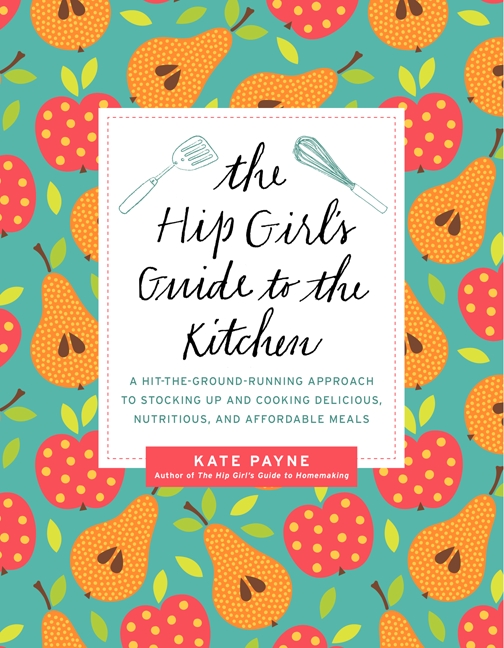



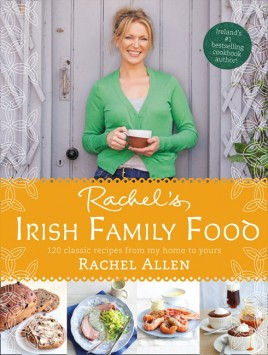
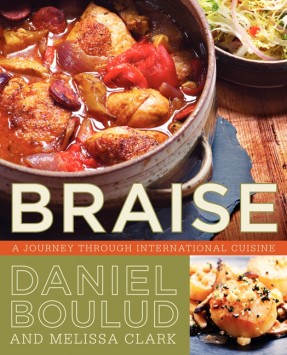
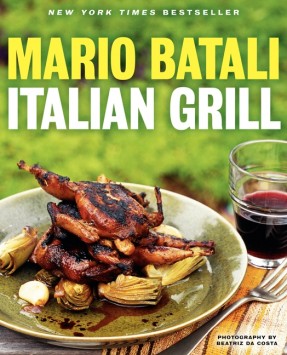
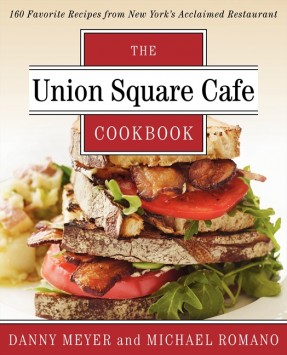
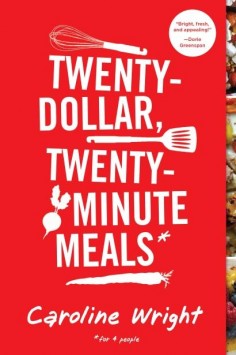
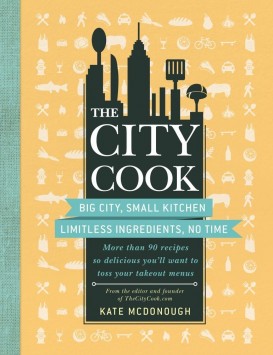
Leave a Reply